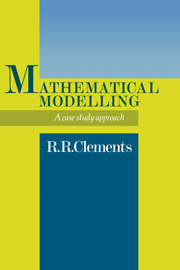Book contents
Summary
In 1973, when I joined the staff of the University of Bristol as a lecturer in the Department of Engineering Mathematics, I found my new colleagues in the preliminary stages of planning a novel degree course to be known as Engineering Mathematics. One of the primary objectives of this degree course was to produce graduates with not only a sound mathematical education but also the ability to apply their mathematical knowledge to the solution of the problems of commerce and manufacturing industry. As a contribution to the design of this course I proposed to my colleagues that we should include, in the overall course structure, a course of practical mathematical activities aimed at introducing students to a range of industrially relevant mathematical and para-mathematical activities. Thus was born the Case Study course.
The concept of the course called for the collection of resource material from a wide cross-section of industry and commerce. To support this phase of the work a grant was sought from the Nuffield Foundation under what was then known as their Small Grants Scheme for Undergraduate Teaching. The grant was approved and the task of gaining the co-operation of industry and commerce in the creation of the resource material for the course proceeded throughout 1976 and 1977. The course itself was first used with undergraduate students in early 1978 and has been run annually since then.
- Type
- Chapter
- Information
- Mathematical ModellingA Case Study Approach, pp. vii - viiiPublisher: Cambridge University PressPrint publication year: 1989



